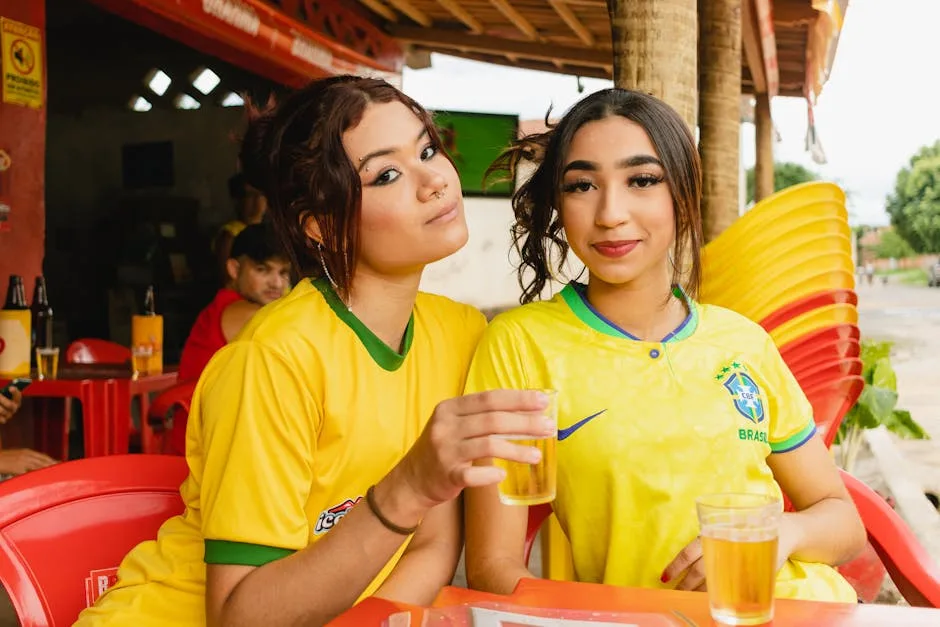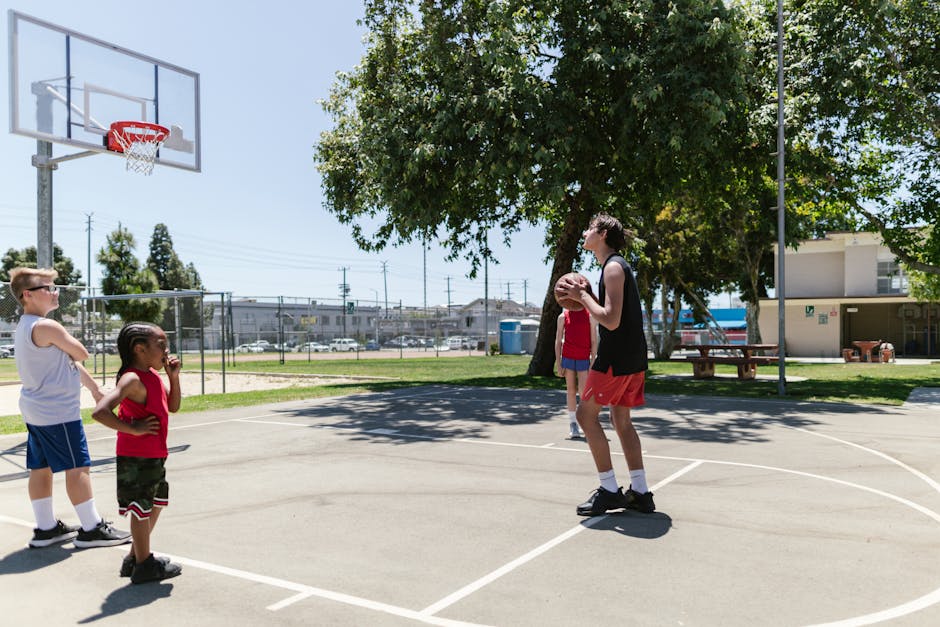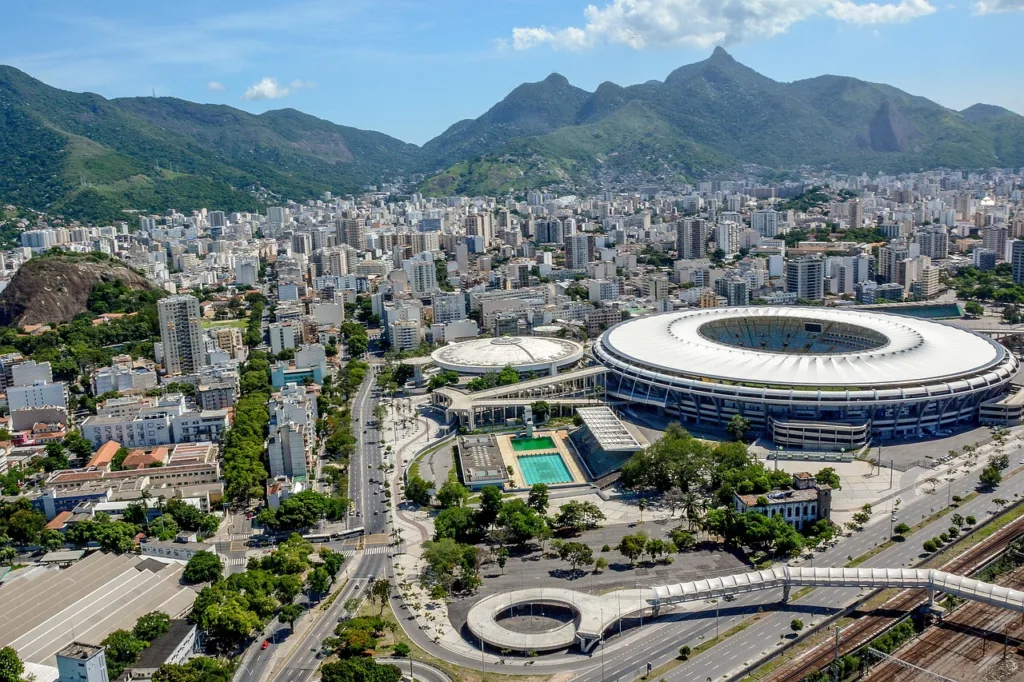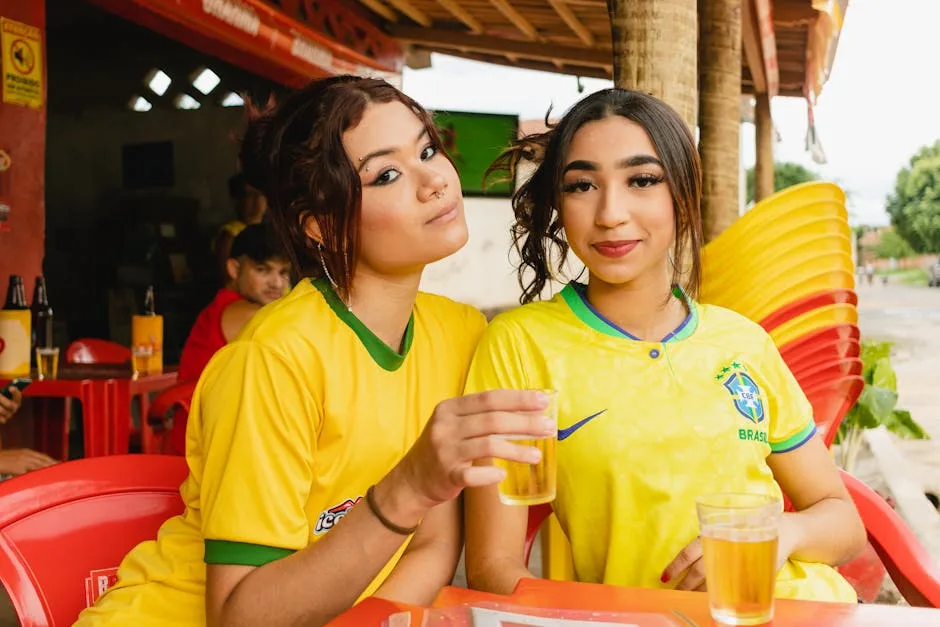- The Enduring Allure of Joga Bonito
- The Predecessors: Paving the Way for a Generation
- Ronaldo Nazário: The Phenomenon
- Ronaldinho: The Magician with a Smile
- Kaká: The Elegant Playmaker
- Neymar Jr.: The Last Samba Superstar?
- The New Wave: Vinícius Júnior and the Modern Brazilian Star
- More Than Just a Winger: Vini's Cultural Impact
- The Supporting Cast: Brazil's European Depth
- The Evolution of Style: From Flair to Function
There’s a certain magic that comes to mind when you think of brazilian football, isn’t there? It’s the vibrant yellow jersey, the rhythm of the samba drums in the stands, and a philosophy known around the world as joga bonito—the Beautiful Game. For decades, the greatest talents from brazil have made a pilgrimage to Europe, testing their unique flair against the tactical rigidity of the world’s best leagues. This journey, from the streets of São Paulo to the hallowed grounds of the Santiago Bernabéu or the Parc des Princes, is a story of adaptation, triumph, and cultural influence. Today, that legacy is carried by superstars like Neymar and, more recently, the explosive Vinícius Júnior.
But to understand where we are now, we have to appreciate the path they walk on—a path paved by legends who redefined what was possible on a football pitch.
The Enduring Allure of Joga Bonito
Before we dive into the modern icons, let’s talk about the soul of their game: Joga Bonito. It’s more than just a playing style; it’s a cultural expression. It’s about playing with joy, creativity, and a touch of audacity. It’s the shimmies, the no-look passes, the elasticos, and the sheer love for having the ball at your feet. This philosophy was immortalized by Pelé and Garrincha, and it’s the very reason European clubs have always looked to Brazil for that spark of genius, that one player who can unlock a defense not just with a pass, but with a moment of pure, unpredictable magic.
This is the inheritance that every Brazilian player carries with them to Europe. They are not just athletes; they are artists, and the pitch is their canvas. But how does this artistry survive, and even thrive, in the high-stakes, high-pressure environment of European football? The answer lies in the legends who came before.
The Predecessors: Paving the Way for a Generation
Long before Neymar and Vini Jr. were household names, a golden generation of Brazilians took Europe by storm, forever changing the perception of what a star player could be.
Ronaldo Nazário: The Phenomenon
Forget what you know about strikers. In the late 90s, Ronaldo—or O Fenômeno—was a force of nature. He combined the blistering pace of a sprinter with the raw power of a heavyweight and the delicate touch of a ballet dancer. His one season at Barcelona is still the stuff of legend; a 47-goal masterpiece where he seemed simply unstoppable. He conquered Italy with Inter and then Spain again with Real Madrid’s ‘Galácticos’. Ronaldo proved that a Brazilian forward could be both a magical entertainer and a ruthless, efficient goal-scoring machine.
Ronaldinho: The Magician with a Smile
If Ronaldo was the unstoppable force, Ronaldinho was the irresistible charm. When he arrived at Barcelona, the club was in a slump. He single-handedly resurrected it with his infectious smile and a brand of football that felt like a celebration. He did things with a ball that no one had ever seen. He made the world’s best defenders look silly and did it all with a joy that reminded everyone why they fell in love with the game in the first place. He wasn’t just playing football; he was performing magic tricks, and he won the Ballon d’Or and the Champions League along the way.
Kaká: The Elegant Playmaker
While Ronaldinho was pure street flair, Kaká represented a different kind of Brazilian elegance. At AC Milan, he was a gliding, powerful force from midfield. His signature move was picking up the ball in his own half and driving forward with an unstoppable grace, culminating in a devastating finish or a perfect pass. His 2007 Ballon d’Or victory marked the last time anyone other than Messi or Cristiano Ronaldo won the award for a decade, a testament to his incredible peak.
Neymar Jr.: The Last Samba Superstar?
Enter Neymar. He was pegged as the heir to the throne from the time he was a teenager at Santos. He carried the weight of a nation on his shoulders and was tasked with keeping the spirit of Joga Bonito alive. His move to Barcelona saw him form the legendary ‘MSN’ trio with Messi and Suárez, one of the most fearsome attacking forces in history. There, his flair was perfectly integrated into a team structure, leading to incredible success, including a Champions League title.
His world-record transfer to Paris Saint-Germain was a move to step out of Messi’s shadow and become the main man. While his time in Paris has been a mix of dazzling brilliance, frustrating injuries, and public scrutiny, you can’t deny his genius. On his day, Neymar is a defender’s worst nightmare—a player who combines intricate dribbling, incredible vision, and a deadly eye for goal. He embodies the modern struggle of the Brazilian superstar: balancing individual expression with the crushing expectations of being the world’s most expensive player.
The New Wave: Vinícius Júnior and the Modern Brazilian Star
And that brings us to the present. It brings us to Vinícius Júnior. When Vini arrived at Real Madrid, he was a raw bundle of energy. All speed and tricks, but often lacking the final product. He was mocked, criticized, and a constant source of debate. But through sheer determination and hard work, he transformed himself.
Today, Vini Jr. is one of the most dangerous and effective wingers on the planet. He is the standard-bearer for the new generation of Brazilian talent. His style is a fascinating evolution. The DNA of Joga Bonito is still there—the explosive step-overs, the shoulder drops, the audacity to take on any defender. But it’s now channeled with ruthless efficiency. His dribbles have a clear purpose: to create a goal or score one. He’s no longer just flair for flair’s sake; he’s flair with a killer instinct. His winning goals in crucial Champions League matches are a testament to his growth from a prospect into a certified superstar.
More Than Just a Winger: Vini’s Cultural Impact
Vini’s influence extends far beyond the white lines of the pitch. In recent years, he has faced disgusting and repeated racist abuse from spectators in Spanish stadiums. Instead of staying silent, he has become a powerful, global voice in the fight against racism. He has stared down hatred and used his platform to demand change, not just in football, but in society.
This has transformed him from a football star into a cultural icon and a leader. He represents a new kind of athlete: incredibly talented, fiercely competitive, and unapologetically vocal about social justice. His struggle and his strength have inspired millions, proving that the influence of a Brazilian star in Europe can be about so much more than just goals and trophies.
The Supporting Cast: Brazil’s European Depth
While Neymar and Vini Jr. grab the headlines, the strength of Brazilian football in Europe is its incredible depth. You see it everywhere.
- At Real Madrid, Vini’s partner-in-crime is Rodrygo Goes, a player with a preternatural ability to show up in the biggest moments, scoring clutch goals that defy belief.
- In the Premier League, Newcastle United’s midfield is powered by Bruno Guimarães, a perfect blend of Brazilian technique and tough-tackling tenacity.
- Arsenal’s attack has been revitalized by the ‘Gabriels’—Gabriel Jesus and Gabriel Martinelli—who bring relentless energy, skill, and a winning mentality.
These players showcase the diversity of modern Brazilian talent. It’s not just about flashy wingers anymore; it’s about complete footballers who can dominate in any position on the pitch.
The Evolution of Style: From Flair to Function
So, has the tactical-heavy nature of European football killed Joga Bonito? Not at all. It has forced it to evolve. The modern Brazilian star understands that flair must be functional. A step-over isn’t just for the crowd; it’s to create a half-yard of space for a shot. A no-look pass isn’t just for show; it’s to deceive a defender and open up a passing lane.
Vinícius Júnior is the poster child for this evolution. He has the soul of a Brazilian street footballer and the mindset of a European champion. He combines the joy and creativity of his heritage with the athleticism, tactical discipline, and relentless drive required to succeed at the highest level. This fusion is the new blueprint for Brazilian success in Europe.
The lineage is clear and unbroken. From the raw power of Ronaldo to the pure joy of Ronaldinho, the torch was passed to Neymar, the superstar who bridged two eras. Now, it shines brightly in the hands of Vinícius Júnior, a player who not only wins games with his feet but also fights for a better world with his voice. The names and faces change, but the magic, the rhythm, and the undeniable influence of Brazil’s stars on the European stage remain as powerful as ever. And you can’t help but wonder, who’s next?






